The Italian Campaign of 1796-1797 day by day
In just over a year, from April 1796 to April 1797, General Napoleon Bonaparte, at the head of an army that was nevertheless poorly prepared and poorly equipped, would impose himself in a masterly and unprecedented manner against the Sardinians and then the Austrians, over a vast territory in northern Italy (current regions of Liguria, Piedmont, Lombardy, Emilia-Romagna, Tuscany, Marche, Veneto, Trentino-Alto Adige and Friuli).
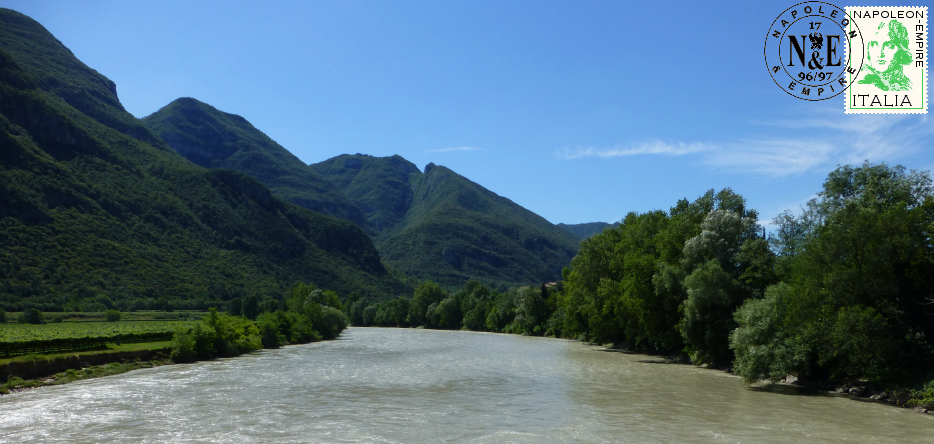
The Adige Valley, near Rivoli Veronese
We followed in the footsteps of the young general, and searched not only for the battlefields, but also for the places where he stayed during this extraordinary journey. The resulting iconography will be enriched as we continue to visit Italy.
March 1796
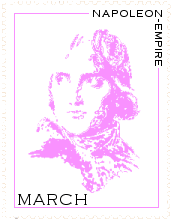
- March 2nd - Napoleon Bonaparte was appointed general-in-chief of the Army of Italy.
- March 11 - He left Paris to return to his post; he was accompanied by his aide-de-camp Jean-Andoche Junot and the chief ordering officer Pierre Antoine Chauvet.
- March 20 - Arriving in Marseille , Napoleon visited his mother.
- 24 - He left Marseille after being joined by Adjutant General Charles Victor Emmanuel Leclerc. In Toulon, he received a visit from the naval authorities (including Rear Admiral Denis Decrès). He left the city through the aptly named Porte d'Italie (Italy Gate) and slept that evening in Antibes.
- March 26 - Napoleon arrived in Nice .
April 1796
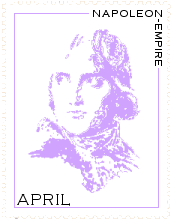
- April 2nd - Having left Nice in the morning, Napoleon Bonaparte slept that same evening in Menton , at 3 Rue de Bréa .
- April 3rd - He was in Porto-Maurizio, near Oneglia.
- April 4 - He set up his Headquarters in Albenga, at the Palazzo Rolandi Ricci .
- April 9 - Napoleon Bonaparte went to Savona, where he resided at the Palazzo Ferrero Colonna Cambiaso [44.31370, 8.47467].
- April 12 - That day, Napoleon Bonaparte left Savona at 1 a.m. and watched from the heights of Casabianca the Battle of Montenotte, the first major confrontation of the Italian Campaign, which took place in Montenotte Superiore , in Liguria [currently the commune of Cairo-Montenotte, province of Savona]. After eating in Altare , Napoleon Bonaparte set up his Headquarters in the evening in Carcare , Casa Ferrero [Piazza Germano / Via Garibaldi] [44.35834, 8.28935].
- April 13 - New clashes at Millesimo , where General Charles Augereau in turn defeated the Sardinians of General Giovanni Provera. The same day and the following day, clashes took place not far from there, for the capture of the ruined castle of Cosseria [44.36300, 8.22658].
- April 14 and 15 - It was in Dego , north of Cairo Montenotte, that General André Masséna distinguished himself in turn.
- April 17 - General Bonaparte set up his HQ in Millesimo [now the town hall] .
- April 18 - General Bonaparte went to Ceva and then to Saliceto , where he slept in the castle [at the corner of the current Via Molino and Via Vittorio Emanuele].
- April 19 - He went to Ceva, then to Lesegno (a village sometimes spelled Lesogno in contemporary sources), where he arrived around midnight. He slept at the castle [44.40171, 7.96417].
- April 20 - He went to the hamlet of San Paolo (2 kilometers southeast of San Michele Mondovì) then had lunch at Gandolfi Sottani, dined at the Palazzo Bianco in Ceva as a guest of the Marquis Cosma Damiano Pallavicino, and finally returned to Lesegno.
- April 21 - The Battle of Mondovì pitted the French against 13,000 Sardinians under General Michelangelo Alessandro Colli-Marchi . Napoleon Bonaparte led it from the Bric della Guardia [44.38877, 7.88511] in Briaglia, from where he enjoyed an extraordinary panoramic view , then from the Cascina del Vescovo (also called Cascina Monsignore) , one kilometer further south, at a place called La Scapita [44.38165, 7.88223]. In the evening, he returned to the castle of Lesegno .
- April 23 - After receiving offers of an armistice, Napoleon Bonaparte left Lesegno for Carrù where he set up his headquarters in the house of the notary Pietro Antonio Massimino [currently no. 22 Via Giuseppe Mazzini] [44.47913, 7.87964], while the troops spent the night on the hill of Preosa.
- April 25 - Napoleon Bonaparte left Carrù and settled in Cherasco , at the Palazzo Salmatoris [today no. 29 Via Vittorio Emanuele II; this palace is now called Palazzo della Paz].
- April 28 - An armistice was signed in Cherasco with the representatives of the King of Sardinia Vittorio Amedeo III.
- April 30 - Napoleon left Cherasco, passed through Cravanzana and Alba , and reached Acqui [Acqui Terme] where he settled.
May 1796
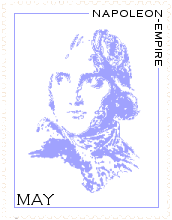
- May 2nd - Having left Acqui, Napoleon Bonaparte went to Bosco Marengo and stayed at the convent of Santa Croce [44.82820, 8.68141].
- May 3rd - Napoleon left for Sale with 500 horsemen commanded by General Charles Édouard Jennings de Kilmaine , then in the evening arrived at Tortona where he had been preceded by 1500 men under the orders of General Jean-Baptiste Meynier. He settled in Fort S. Vittorio which dominated the town [destroyed in April 1801, only the tower of the church of S. Amadeo remains today ] [44.89361, 8.87093].
- May 6 - Having left Tortona, he followed the right bank of the Po at a distance, passing through Voghera , stopping at Broni and then joining the vanguard of his troops at Castel San Giovanni.
- May 7 - He set off at 4 a.m. for Piacenza; he stayed at the Palazzo Scotti di Sarmato [corner of Via S. Siro and Via Pietro Giordani] [45.04844, 9.69312].
- May 8 - He went to Pizzighettone to study the possibility of crossing the Adda River, then returned to Piacenza.
- May 10 - He left Piacenza before dawn heading north, crossed the Po at Ca' Rossa, and arrived at Casalpusterlengo at 3 a.m. He spent a few hours there in the house of Avv. Carlo-Antonio and Francesco Pedroli, where he conferred with André Masséna and Charles Édouard Jennings de Kilmaine. Then he headed towards Zorlesco , which he reached at 7 a.m. He advanced on Lodi at the head of the vanguard. From 10 a.m. the Battle of the Lodi Bridge , took place, which saw the Austrians overthrown and the Adda River crossed. He slept in Lodi, at Modignani Palazzo [45.31242, 9.50477].
- May 12 - He left Lodi at 3 o'clock, passed through Ombriano then stopped at Crema where, in the company of the army commissioner Christophe Saliceti, he met the Podestà Zan Battista Contarini. Then he continued to Castelleone, Formigara, Soresina and slept in Pizzighettone.
- May 13 - He returned to Lodi, where he slept.
- May 15 - Napoleon Bonaparte left for Milan [Milano] , conquered the day before by Masséna, where he was received by Archbishop Filippo Maria Visconti . After a banquet given in the evening at the Palazzo Reale, he spent the night at the Archbishopric. He remained in the Lombard capital until the 23rd, staying at the Serbelloni Palace [currently No. 16 of Corso Venezia where a commemorative plaque recalls his visit].
- May 23 - He returned to Lodi, where the General Headquarters were still located. There he discussed matters with his Chief of Staff Louis-Alexandre Berthier.
- May 24 - Learning of the insurrection in Pavia, he headed for Milan.
- May 25 - He passed through Binasco , a rebellious village, which he had burned (some sources place this episode on the 24th). He arrived in Milan, where he gathered the authorities to threaten them with reprisals in the event of a new insurrection.
- May 26 - Napoleon Bonaparte went to Pavia where he stayed at the Novarese College or Collegio Caccia, in the western part of the city [today at no. 20 Viale Matteotti]. From there he headed east-northeast for Lodi and Soncino , where he stayed at the Casa degli Azzanelli .
- May 27 - He arrived in Brescia, and settled in the monastery of Santa Eufemia [current Goito barracks, at no. 66 Corso Magenta].
- May 29 - He went to Calcineto [Calcinato] , then at nightfall headed for Borghetto .
- May 30 - That day the Battle of Borghetto took place, on the Mincio River , at the foot of the Valeggio Castle . While having lunch with Joachim Murat and André Masséna at Palazzo Guarienti, his headquarters in Valeggio [at number 27 of the current Via Antonio Murari], Napoleon narrowly escaped capture by the Austrians, but managed to escape with his guests. This mishap led him to decide to create a corps of guides responsible for his escort and protection, which would become under the Empire the corps of mounted hunters of the Imperial Guard.
- May 31 - Having left during the night, he was at dawn at Rivoli Veronese , then went back down south to Castelnuovo del Garda , which he captured, before entering Peschiera , on the south shore of Lake Garda.
June 1796
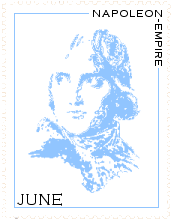
- June 1st and 2nd - In Peschiera, Napoleon lodged in the fortified castle. On the 1st, he received Antonio Maria Ravaschieri Fieschi Pinelli Pignatelli, Prince of Belmonte, Minister of the Kingdom of Naples.
- June 3rd - Having left Peschiera, Napoleon went successively to Castiglione (delle Stiviere or Mantovano?), to Verona where he set up his HQ at the Palazzo Emilei [which became Palazzo Emilei-Forti in 1854; a commemorative plaque on its façade, however, indicates an arrival of Bonaparte on June 1], and left at night for Roverbella .
- June 4 - He went down towards Mantua to the south, and at the gates of the city seized the suburb of San Giorgio Mantovano . After a stop at La Favorita, he slept in Brescia.
- June 5 - In Brescia, a new interview with the Prince of Belmonte-Pignatelli, in the presence of the ambassador André-François Miot (future Count of Mélito) , resulted in the signing of a suspension of arms with the Kingdom of Naples.
- June 6 - He went to Milan, where he stayed until the 12th. Two return trips to Bologna on the 8th and 10th are cited by several authors, but given the 217 kilometers separating the two cities and the speeds of travel at the end of the 18th century, they seem improbable to us.
- June 7 - He received Don José Nicolás de Azara y Perera , Spanish ambassador in Rome and mediator of peace with the Holy See.
- June 12 - He left Milan for Pavia.
- June 13 - He went to Tortona. He stayed there until the 17th, at Fort S. Vittorio as in May, writing several letters to Josephine.
- June 17 - He left towards the east, towards Bologna, which he reached the following day after passing through Modena.
- June 19 to 24 - He was in Bologna, staying at the Pepoli Palace [Via Castiglione] and at the Caprara Palace, seat of the prefecture [both located on either side of the cathedral ]. There he received Spanish and Holy See diplomats, including the Knight of Azara - already met on the 7th in Milan - and the Marquis Antonio Gnudi; an armistice agreement was signed with them on 23.
- June 25 - He went to Pistoia, northwest of Florence, by the new "Modenese" road through the Apennines inaugurated in 1791.
- June 26 - He headed southwest towards Livorno, a Tuscan port on the Tyrrhenian Sea, where he arrived on the 27th and stayed for two days.
- June 27 - Napoleon met Francesco Spannocchi Piccolomini, Governor of Livorno, in Via Borgo Reale [today at no. 211 Via Garibaldi].
- June 29 - He went to San Miniato, to the east, for a visit to Canon Filippo Buonaparte; the latter offered him and his staff a magnificent dinner, and put him up for the night at the Palazzo Buonaparte [between the present Via Maioli and Piazza XX Settembre].
- June 30 - Napoleon returned to Livorno, then left for Florence [Firenze] which he reached at 7 p.m. He stayed for two days with André-François Miot at the Palazzo Ximenes da Sangallo [now at no. 68 Via Porta Pinti].
July 1796
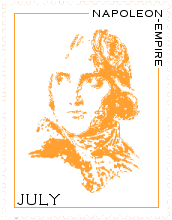
- July 1st - At the Palazzo Pitti in Florence, Napoleon was the guest for lunch of Grand Duke Ferdinand of Habsburg , brother of Emperor Francis II. He visited the Uffizi Gallery , and fell in admiration before the Venus de' Medici (a sculpture that he would have transferred to the Louvre in 1803).
- July 2nd - He returned to Bologna.
- July 3rd - He went to Carpi, north of Modena, where he stayed in the castle (Palazzo dei Pio).
- July 4 - He set up his headquarters at Roverbella (sometimes spelled Roverbello in contemporary documents), where he remained until the 8th.
- July 8 - He left for Verona.
- July 10 - He went to Porto-Legnago (southeast of Verona, on the Adige River) to inspect the fortress.
- July 11 - He returned to Verona, via Marmirolo and Roverbella.
- July 13 - He left Verona for Milan.
- July 15 - He went to Marmirolo (north of Mantua), where he stayed until the 19th, with round trips to San Giorgio Mantovano.
- July 19 - He left Marmirolo for Castiglione delle Stiviere; he stayed there four days.
- July 23 - Return to Verona for the general-in-chief.
- July 25 - He ran to meet Josephine, who was coming from Milan by Cassano d'Adda, who finally joined him; they went to Brescia, where they stayed until the 28th at the Fenaroli Palace [now the Bettoni-Cazzago Palace, at no. 17 Via Marsala].
- July 28 - The Bonaparte couple left Brescia at 10 p.m., heading for Castelnuovo (west-northwest of Mantua).
- July 29 - While Josephine, wanting to reach Brescia, was under enemy fire towards Mantua, Napoleon Bonaparte, having arrived in Peschiera at dawn, reached Montichiari and Castelnuovo del Garda.
- July 30 - He displayed enormous activity, moving on to Desenzano, Castiglione delle Stiviere, Castelnuovo del Garda , before holding a council of war in the evening at Roverbella.
- July 31 - He passed through Goito then marched at night on Brescia.
August 1796
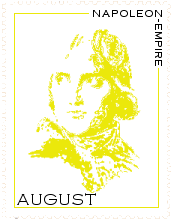
- August 1st - Napoleon arrived in Brescia at 10 am. He went to Montichiari at 4 pm, then moved his HQ to Castenedolo , southeast of Brescia, precisely to the Casa Baschi [currently no. 8 of the Via Manzoni].
- August 2nd - After a new passage through Brescia, then to Calcinato where he stopped at the Palazzo Briggia Filippini [today at no. 89 of Via Giuseppe Garibaldi], he returned to Montichiari, where he settled in the Palazzo Monti [currently no. 237 of Via XXV Aprile].
- August 3rd - The Battle of Lonato saw the French and Austrians clash on a front extending from Salo, on the western shore of Lake Garda, in the north, to Castiglione delle Stiviere in the south; the commander-in-chief appeared at Lonato, Castiglione and Castenedolo. General Peter Vitus von Quasdanowich was routed.
- August 4 - Napoleon marched on Lonato and then Castiglione.
- August 5 - On that day, a major battle of the Italian campaign took place at Castiglione delle Stiviere , in which Dagobert von Würmser was defeated. Bonaparte spent the night at his HQ , located Piazza Colonna [nowadays Piazza Ugo Dallo] [45.39182, 10.49039].
- August 6 - After going to Peschiera, Napoleon Bonaparte returned to Castiglione to write up the report of the battle for the French Directory.
- August 7 - Napoleon headed for Verona, which he reached at 10 p.m. and whose gates he had to break down. He remained in the city of the Capulets and Montagues until the 9th.
- August 10 to 24 - He was again in Brescia, during which time he went to Storo on the 16th and to Salo on the 17th. On the 19th, he had a stormy meeting with Cardinal Alessandro Mattei , Archbishop of Ferrara, whom he had imprisoned for having tried to restore papal power in his city.
- August 25 - Napoleon returned to Milan, where he stayed with Josephine until the 29th. Some sources have him making a return trip to Verona on the 26th; this seems unlikely to us, 160 kilometers separating the two cities, not to mention the affectionate presence of his wife in Milan...
- August 30 - He was in Brescia.
- August 31 - He left Brescia for Desenzano .
September 1796
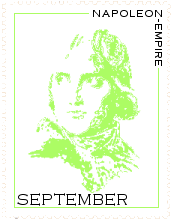
- September 1st - Napoleon went to Peschiera.
- September 2nd - He went to Verona.
- September 3rd - He was at Ala then Serravalle , on the river Adige .
- September 4 - He returned to Ala, then took part in the battle of Roveredo [Rovereto] , a town northeast of Lake Garda .
- September 5 - He entered Trento in the afternoon, and slept there at the Palazzo Pretorio .
- September 6 - He went with 15,000 men to Borgo-di-Val-Suganna [Borgo Valsugana] , east of Trento; he slept there in a house [at the current number 18 of the Via Padri Marco e Maurizio Morizzo] near the church of Nativita' di Maria.
- September 7 - He went down the river Brenta, pushed Wurmser back at the height of Primolano, and continued to Cismon del Grappa, where he bivouacked among the soldiers
- September 8 - He continued down the Brenta, passed through Solagna and confronted Wurmser's troops at Bassano del Grappa . He settled for two days in Bassano, at the Roberti Palace [nowadays at no. 34 Via da Ponta].
- September 10 - General Bonaparte headed southwest, and stopped for the night at Montebello Vicentino , at Villa Giovanni [at current number 40 of Via XXIV Maggio].
- September 11 - Direction Cerea, to the south-southwest, where he narrowly escaped capture.
- September 12 - He returned to Ronco all'Adige.
- September 13 - He went to Castellaro Lagusello , south of Lake Garda, and set up his headquarters at Villa Arrighi .
- September 14 - He headed for Mantua, but in sight of the city suffered a setback at Due-Castelli [Castelbelforte].
- September 15 - He fought at San Giogio Mantovano and La Favorita, forcing Wurmser to shut himself up in Mantua.
- September 16 - Return to Due-Castelli.
- September 17 and 18 - He spent two days in Verona.
- September 19 - Return to Milan, where he found Joséphine again.
- September 20 to 30 - He stayed in the Lombard capital.
October 1796
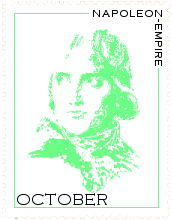
- October 1st to 11 - Still in Milan, with his wife.
- October 12 - He left in the direction of Modena, passing through Piacenza.
- October 13 - At 6 a.m., he was in Parma, then reached Modena.
- October 14 - He found himself in Modena.
- October 15 - In the company of his brother Louis, General Berthier, Marmont and Antoine Christophe Saliceti , and an escort of 24 hussars, he went to Novellara and Guastalla, to the northwest, then returned to Modena.
- October 16 and 17 - Suffering, he kept his room on the 16th and rested on the 17th in Modena.
- October 18 - He left Modena for Bologna, which he reached in the evening.
- October 19 - He left for Ferrara, where he remained until the 21st.
- October 21 - Napoleon had an interview with Cardinal Alessandro Mattei, Archbishop of Ferrara, whom he asked to go to Rome to pray to the Pope Pius VI to initiate peace talks.
- October 22 - He was in Verona with Josephine, and remained there until the 26th.
- October 27 - He made a stopover in Peschiera, where he spent the day.
- October 28 to 31 - He stayed in Verona.
November 1796
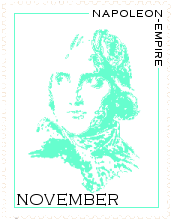
- November 1st to 3rd - Always in Verona.
- November 4 - He went to Montebello Vicentino, where he slept.
- November 5 - He went to Vicenza, and settled in the Palazzo Cordellina , on the Contrà Riale [45.54839, 11.54409].
- November 6 - He was defeated by General Josef Alvinczy von Borberek near Bassano del Grappa. Forced to retreat, he was again in Cordellina where he received the representative of the city, Count Camillo Chiericati, to whom he expressed his protest against the offensive attitude of the people of Verona who were jumping for joy at the French defeat.
- November 7 - He was at Rivoli Veronese .
- November 8 - He returned to Verona, where he stayed for three days.
- November 11 - He went out from Verona to fight at Caldiero, 15 kilometers east of the city, and at San Massimo, in the western suburbs.
- November 12 - A new clash at Caldiero ended in tactical failure for Napoleon Bonaparte.
- November 13 - He left Verona for Villafranca di Verona .
- November 14 - Napoleon returned to Verona to join the army, then left the city through the Porta Nuova and went to Ronco all'Adige.
- November 15 to 17 - These three days saw the French and the Austrians clash between Ronco (where Napoleon had his HQ ) and Arcole , where the socket from the bridge over the Alpone [45.35728, 11.27767] saw the writing of one of the most beautiful pages of the Italian campaign.
- November 18 - He rested in Ronco after the battle.
- November 19 - He returned to Verona, where he stayed for a week.
- November 25 - He left for Milan, where he arrived on the 27th; but Josephine was not there...
- November 28 to 30 - He was in Milan.
December 1796
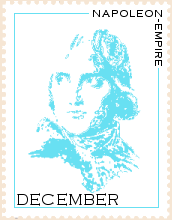
- December 1st to 17 - Napoleon remained in Milan. On the 1st, he had an interview with General Henri-Jacques-Guillaume Clarke (future Duke of Feltre), sent to him by the Directory.
- December 18 to 21 - He was in Verona.
- December 22 to 31 - Again in the Lombard capital.
January 1797
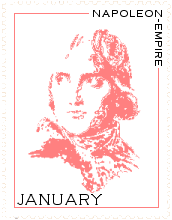
- January 1st to 6 - Napoleon was in Milan.
- January 7 - He left Milan heading east-southeast towards Parma.
- January 8 - He pushed on to Bologna, returned in the evening to Reggio Emilia [Reggio nell'Emilia] and then returned to Verona at night.
- January 9 - He met the army at the siege of Mantua.
- January 10 - Verona again and then Bologna. Some authors place Bonaparte's interview with the Prussian diplomat Girolamo Lucchesini on this day (others place the Bolognese meeting a month later, on February 21, after the Treaty of Tolentino).
- January 11 - He headed north-northwest to Borgoforte, where he crossed the Po River, then north to Roverbella, bypassing Mantua, which was still under siege.
- January 12 - He went back up to Verona, while General Alvinczy went down to the eastern shore of Lake Garda towards Rivoli Veronese .
- January 13 - At 11 p.m., Napoleon left Verona for a night march toward Rivoli.
- January 14 - On this day, on a vast battlefield between the village of Rivoli Veronese and the foothills of Monte Baldo , the first day of the Battle of Rivoli took place, another great victory for Bonaparte, at the end of which the Austrian hopes of unblocking Mantua were to be dashed. In the evening, Bonaparte gathered his generals at the Ca' del Ri , in Affi
- January 15 - While General Barthélemy Joubert was completing the victory, Bonaparte was at Villafranca di Verona, Roverbella, Verona and finally at Castelnuovo where he slept. But he left at night for Mantua, taking with him the troops of Generals Masséna and Victor.
- January 16 - The Battle of La Favorita took place at the gates of Mantua, during which Wurmser's escape from the besieged city ended in failure.
- January 17 - Bonaparte was at Roverbella then in Verona.
- January 18 to 29 - He remained in Verona. Some authors make him make a return trip to Mombello on the 22nd; this seems unlikely to us, since Mombello, west of Monza, is 165 kilometers from Verona, and the other places named Mombello are even further away.
- January 29 - Departure for Roverbella.
- January 30 and 31 - He skirted Mantua, and headed for Bologna, which he reached on 1 February.
February 1797
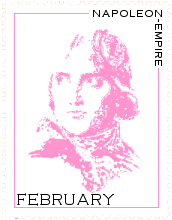
- February 1st - Napoleon was in Bologna.
- February 2nd - He went to Imola, to the east-southeast, where he was the guest of Cardinal Barnaba Chiaramonti, the future Pope Pius VII!
- February 3rd - He continued to Faenza and Forli, where he stayed until the day after.
- February 5th - He went to the shores of the Adriatic: Rimini, then Pesaro.
- February 6 and 7 - Still in Pesaro.
- February 8th - He continued along the Adriatic coast to Sinigaglia [Senigallia].
- February 9 - Further southeast along the coast, he reached Ancona; he stayed at the Palazzo of the Marquis Trionfi.
- February 10 to 12 - He was still in Ancona.
- February 14 - Heading for Macerata, 30 kilometers southwest, where he stayed for two days.
- February 16 to 19 - 25 kilometers further, he was on the 16th in Tolentino, a city then belonging to the Papal States [today in the Marches]. Living at Palazzo Parisani [now Palazzo Bezzi], he received plenipotentiaries of the Holy See (Cardinal Alessandro Mattei, Abbot Lorenzo Caleppi , Duke Luigi Braschi-Onesti and Marquis Camillo VII Massimo ), then signed with them on the 19th the Treaty of Tolentino, by which the Holy See consented to financial, territorial (Avignon and Comtat Venaissin, as well as Romagna) and patrimonial losses (around a hundred paintings and works of art).
- February 20 - Napoleon went back to Ancona...
- February 21 - ... then to Pesaro...
- February 22 - ... then to Rimini...
- February 23 - ... then to Ravenna...
- February 24 - ... to finally reach Bologna, where Josephine was awaiting him.
- February 25 to 28 - He stayed four days in Bologna.
March 1797

- March 1st - He went to Mantua, accompanied by Josephine, and settled in the Palazzo Ducal .
- March 2 to 8 - In Mantua, Bonaparte developed his strategy for the campaign that would lead him to march on Vienna [Wien].
- March 9 - He moved his headquarters to Bassano del Grappa, again at the Palazzo Roberti [nowadays at no. 34 Via da Ponta].
- March 11 - He went to Asola [Asolo], a few kilometers to the east-northeast, where he slept at the Palazzo Pasquali [45.80304, 11.90898] [however the commemorative plaque indicates March 10 and not 11].
- March 12 - He was in Ciano del Montello , where he spent the night with the Biadene family [house on the current Via Francesco Barraca, at n° 129] [45.82570, 12.05865] then nearby from this village he crossed the Piave River .
- March 13 - He bivouacked near Conegliano , or stayed in town at the Palazzo Marchetti-Zava [45.88487, 12.29479].
- March 14 - He continued east-northeast to Sacile, where he stopped at Palazzo Ragazzoni [Viale Pietro Zancanaro 2] [45.95498, 12.50371], belonging to the Flangini family.
- March 15 - He headed east to Pordenone, where he stayed at the Palazzo Mantica Cattaneo [located today at 54 Corso Vittorio Emmanuele II] [45.95492, 12.65990].
- March 16 - Reinforced by the Bernadotte division recently arrived from Alsace, Bonaparte fought against the Austrians under the command of Archduke Charles the so-called Battle of the Passage of Tagliamento River, or Battle of Valvasone . The French, who arrived on the river from its right bank (to the west) crossed it by ford and broke through the enemy located on the left bank , who had to retreat. Having won the victory, Napoleon returned to the right bank in the middle of the afternoon and moved his HQ to Valvasone , at the Palazzo of Count Eugenio [45.99613, 12.86428], until the day after tomorrow. During this stay, he attended a performance in the small theater of the castle.
- March 18 to 20 - On the 18th, Bonaparte went to Palmanova [45.90543, 13.30985], a fortress with an "Italian" layout, that is to say a star, south of Udine. He stayed there for three days [the house where his HQ was located no longer exists], with a trip to Viscone and Medea on the 19th.
- March 21 - He left Palmanova, heading east. He entered Carniola (then a Habsburg possession), reaching Gradisca d'Isonzo , town taken on March 19, then Goritz [Gorizia]. He stays there at the Palazzo de Grazia [at the corner of today's Corso Giuseppe Verdi and Via Guglielmo Oberdan] [45.94562, 13.62285].
- March 22 to 25 - During his stay in Goritz, he refined his plans of attack.
- March 26 - Napoleon set out with two divisions north to the Julian Alps, intending to join André Masséna at Tarvis [Tarvisio]. He crossed Salcano [Solkan] , then went up the Isonzo [Soča] passing successively by Canale d'Isonzo [Kanal] where he had his white horse, which had just breathed its last, buried with military honors, and Caporetto [Kobarid] , where he crossed the bridge that would later bear his name , spanning the turquoise river .
- March 27 - He continued to go up the course of the Isonzo until Plezzo [Bovec] , then that of its tributary the Koritnica river and its deep gorges [Korita Kluže] , where the French captured the Kluze fortress [which was destroyed shortly after, then rebuilt by the Austrians at the end of the 19th century ] [46.36113, 13.58968].
- March 28 - After crossing the Predil Pass (altitude 1,156 meters) [46.41855, 13.57822], Napoleon arrived at Tarvisio , then headed east to Villach on the Drava River, finally Klagenfurt , a town in Carinthia [Kärnten] with some 3,000 inhabitants on the shores of Lake Wörthersee, where he arrived at 4 in the afternoon. He stayed in Count Egger's Palazzo on the Herrengasse [current no. 12] [46.62558, 14.30593]
- March 29 to 31 - Several trips back and forth between Villach and Klagenfurt.
April 1797

- April 1st - Having left Klagenfurt heading north, Napoleon defeated the Austrian rearguard in the gorges near Wildbad Einöd , between Friesach and Neumarkt in der Steiermark .
- April 2nd - New round trip between Friesach and Neumarkt .
- April 3rd - He defeated the Austrians again further north, at Unzmarkt , on the banks of the Mur River ; then he went to sleep at Schrattenberg Castle in Scheifling [burned down in 1915, only the ruins remain], on the banks of the Mur River [47.14223, 14.39063].
- April 4 and 5 - He stayed in Scheifling.
- April 6 - He left for Judenburg, where he set up his headquarters in the presbytery [Kirchengasse 3] until the 9th. A five-day suspension of arms was signed at midnight on the 7th with the Austrian generals Heinrich Joseph von Bellegarde and Maximilian Friedrich von Merveldt , plenipotentiaries.
- April 10 - Napoleon was at Bruck an der Mur , 62 kilometers east-northeast.
- April 11 - He headed south to Graz, capital of the Duchy of Styria [Steiermark] and former residence of the Habsburgs until 1619. He stayed in the house of Count Stubenberg [Herrengasse 13].
- April 13 - He left Graz for Leoben , a market town on the Mur River, which he had crossed on the 10th. He was the guest of the bishop, Count Alexander Franz Joseph von Engl von und zu Wagrain, in the former Benedictine monastery of Göss , two kilometers south of the town. After a meeting with the same Austrian negotiators Bellegarde (and not Beauregard as sometimes cited) and Merveldt, the suspension of arms was extended until the 20th.
- April 14 - He remained in Göss.
- April 15 - He went to the suburb of Münchthal [we have not found a place named this way, it is probably the Eggenwald pavilion, see below], near the Mur bridge in Leoben, for a conference between French and Austrian plenipotentiaries.
- April 16 and 17 - Still in Leoben.
- April 18 - The preliminaries to a peace treaty were signed at two o'clock in the morning at Eggenwald Castle (actually a simple one-story summer house with an attic gable and a double staircase , owned by Baron Joseph Egger von Eggenwald) by Napoleon Bonaparte, Marzio Mastrilli, Marquis of Gallo , and General Maximilian Friedrich von Merveldt.
- April 19 to 21 - In Leoben and at Eggenwald Castle.
- April 22 to 27 - Napoleon was in Graz, with a return trip on the 23rd or 24th to Palma [we have not found this place, and it is impossible that it was Palmanova, located 290 kilometers away. Unless it was the Palmburg residence, located... 650 meters north of his HQ!].
- April 28 - He arrived in Laybach [Ljubljana, today in Slovenia], where he stayed at the Episcopal Palace [Ciril Metodov Trg 4] [46.05049, 14.50768].
- April 29 - He left Laybach heading southwest, crossed Adelsberg [Postojna] and arrived in Trieste. He settled there in the Palazzo Brigido [current Via Pozzo del Mare] [45.64931, 13.76742], at the home of Pompejus Lorenz Brigido von Bresowitz, the military governor of the city.
- April 30 - In Trieste, he received the ratification by Austria of the preliminaries of Leoben. The military operations of the Italian Campaign were over. Napoleon went to sleep in Palmanova .
Later
- May to November 1797 - Napoleon Bonaparte would remain in Italy until November 19, deploying an administrative and diplomatic activity of the first importance. Negotiations were held alternately at the Villa Manin in Passaiano, where Napoleon was residing, and in Udine, at the Palazzo Florio where Count Jean Louis de Cobentzel (Johann Ludwig von Cobenzl) was lodging and at the Palazzo Antonini-Belgrado , which was housing the Marquis Marzio Mastrilli de Gallo. At their conclusion, the so-called Campo Formio Peace Treaty was signed on 17 October in a modest inn in the village of Campoformido, halfway between these two places (or at Villa Manin, Campo-Formio being included in the text of the treaty so as not to humiliate the Austrians).
Map of the Italian campaign of 1796-1797
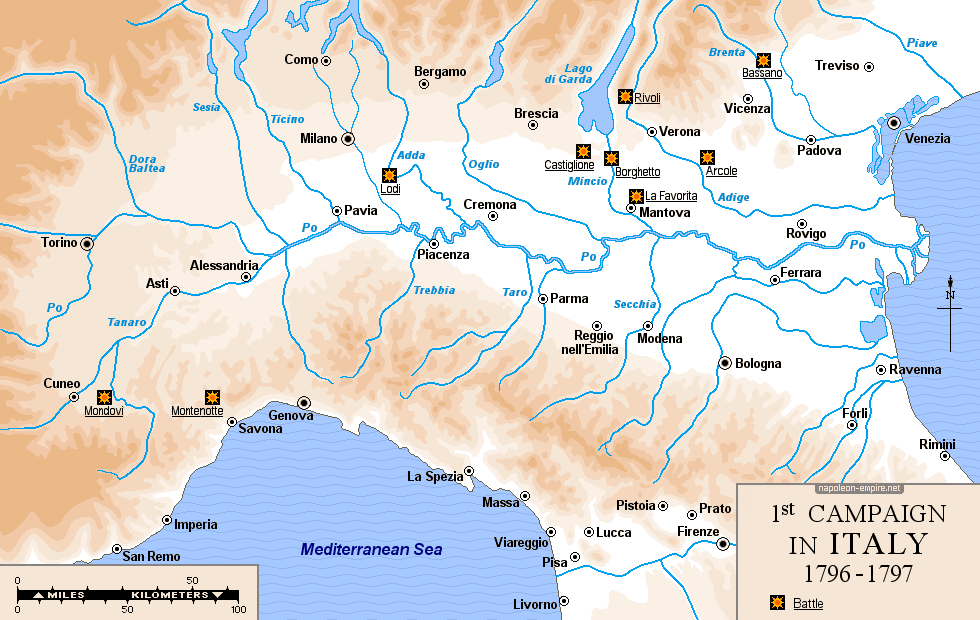
 All of Napoleon's movements from 1769 to 1821
All of Napoleon's movements from 1769 to 1821
Photos credits
Photos by Lionel A. Bouchon.Photos by Didier Grau.
Photos by Michèle Grau-Ghelardi.
Photos by Marie-Albe Grau.
Photos by Floriane Grau.
Photos by various authors. Our warmest thanks to Mr Ugo Valfer.